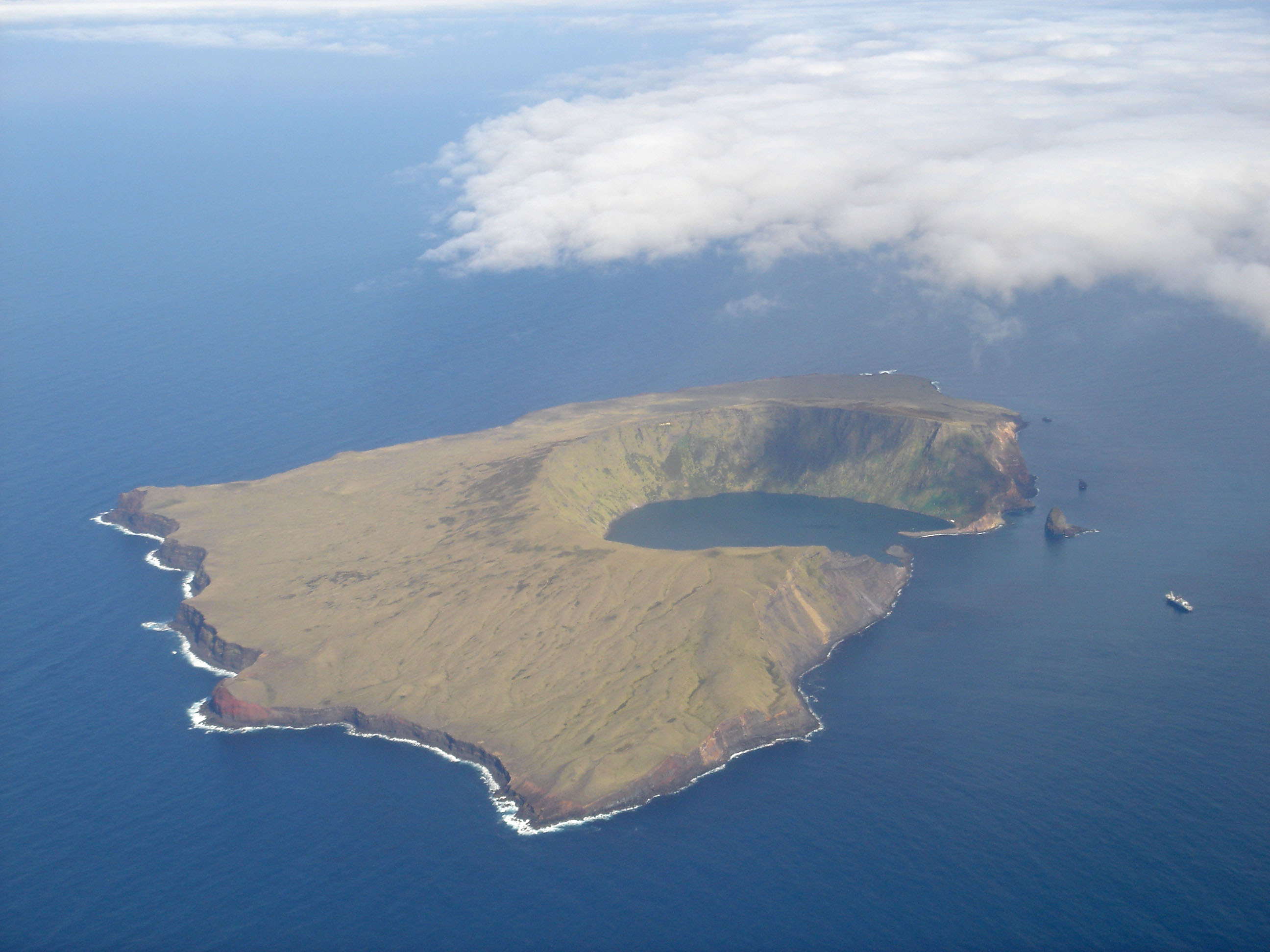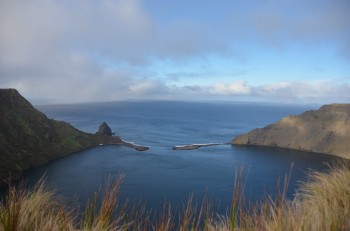
Saint-Paul Island with La Roche Quille, photograph from Thierry Micol
Christophe Barbraud (Centre d’Etudes Biologiques de Chizé, Villiers en Bois, France) and colleagues have published in the Journal for Nature Conservation on the recovery of France’s Saint Paul Island two decades after the eradication of two introduced mammals.
The paper’s abstract follows:
“The eradication of invasive mammals on islands is important for protecting seabird populations and insular ecosystems. However, the impacts of such eradications are insufficiently known because monitoring of potentially beneficiary species is often sporadic and limited. We performed a survey of all seabird species on Saint-Paul Island, southern Indian Ocean, 20 years after successful eradication of invasive black rat (Rattus rattus) and European rabbit (Oryctolagus cuniculus). Using complementary sampling designs including adaptive cluster sampling, stratified random sampling and entire sampling, we estimated population changes and colonization by new seabird species. A total of 13 seabird species were found breeding on Saint-Paul post-eradication compared to six before the eradication. Among the seven species that colonized the island, five (MacGillivray’s prion Pachyptila macgillivrayi, fairy prion P. turtur, white-bellied storm petrel Fregetta grallaria, Antarctic tern Sterna vittata, sooty tern Onychoprion fuscatus) had relictual populations breeding on a nearby islet, and one (brown skua Catharacta antarctica) was a new breeding species. We also found breeding subantarctic little shearwaters Puffinus elegans. For species that were breeding on the Saint Paul pre-eradication, the mean annual population growth rate was 1.030 ± 0.093 (SE). Species known to be vulnerable to rat predation (prions, great-winged petrel Pterodroma macroptera, flesh-footed shearwater Puffinus carneipes, subantarctic little shearwater, white-bellied storm petrel, Antarctic tern) had the highest population growth rates. Two decades after the eradication of invasive mammals on a remote oceanic island, seabird populations were high beneficiaries. These findings further highlight the importance of invasive mammal eradication on islands as a conservation tool. Results are encouraging for the planned eradication of invasive mammals from nearby Amsterdam Island, and suggest this will mainly benefit terns and small burrowing petrels.”

Saint-Paul Island's flooded crater with La Roche Quille behind, photograph by Jeremie Demay
Reference:
Barbraud, C., Delord, K., Le Bouard, F., Harivel, R., Demay, J., Chaigne, A. & Micol, T. 2021. Seabird population changes following mammal eradication at oceanic Saint-Paul Island, Indian Ocean. Journal for Nature Conservation 63. doi.org/10.1016/j.jnc.2021.126049.
John Cooper, ACAP Information Officer, 28 September 2021

 English
English  Français
Français  Español
Español